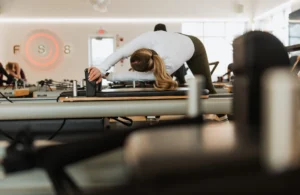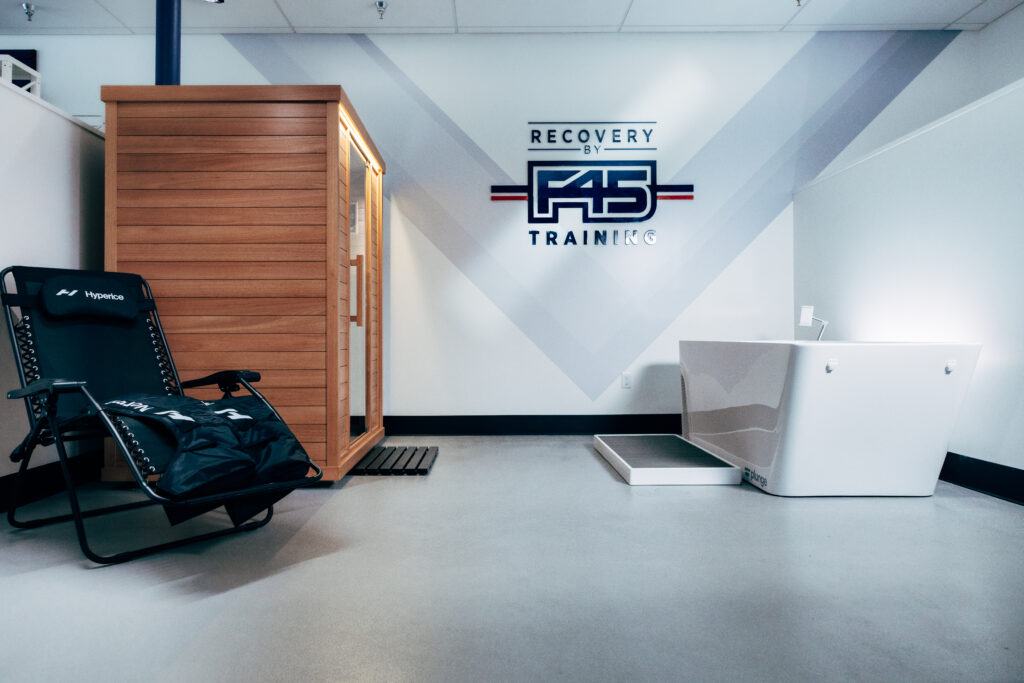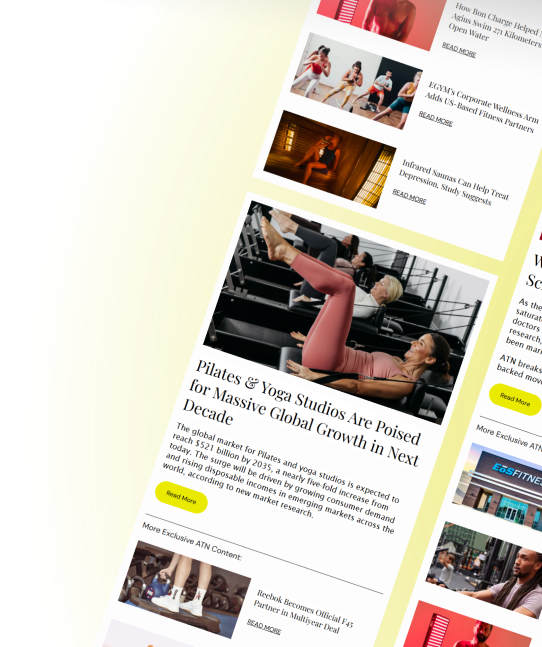
F45 is making Pilates, yoga and other pro-recovery elements of fitness more accessible through education and help from the HQ level
Recovery has become a hot topic in fitness, but many people still don’t fully understand how to use it effectively. F45 Training and FS8 are two brands that are helping change that.
FS8, which recently launched its first U.S. flagship location, offers low-impact, high-intensity workouts that combine Pilates, yoga and toning exercises. This unique blend helps turn curious participants into long-term members.
“People are excited about things like cold plunges and saunas,” said Cristina Chan, Recovery Expert and F45 Training Athlete. “But most don’t understand how or why to use them. We focus on education — helping members understand why they’re doing something, not just jumping on a trend.”
What Actually Happens in Recovery
While the particularities of the science behind cold plunging and saunas might be intimidating, what actually takes place is rather rudimentary.
“There’s so many fancy words and information that’s floating around this space currently,” said Chan. “But to break it down simply, the cold plunge and sauna are primarily focused on recovery for blood flow and your nervous system. Sauna brings blood to the surface and cold plunge retracts it. If you contrast the two, the blood comes up and down through the tissue — that’s what helps with recovery because the oxygen and blood flow is going to the muscle.”
F45, FS8 and even some VAURA locations also facilitate percussion therapy. This recovery offering, while possibly daunting to newcomers on the surface, is anything but. By applying pressure, the therapy simply breaks up knots, scar tissue or anything else creating imbalances in the body.
Making Recovery Accessible for Everyone
Chan believes being calculated with these wellness services — gym-goers weaving them into their routines organically and highlighting their impact — is key to growing them.
“For the average member, you’re going to the gym maybe a few times a week, you’re not doing anything so out of routine with this,” said Chan. “You don’t need to do it regularly all the time. It’s one of those things that you would supplement as needed. Just being intentional about how you’re using these things, creating awareness and educating yourself is a really big tool.”

How the Franchise Model Helps
Thanks to the structure of the F45 and FS8 franchise system, recovery-focused workouts are easy for anyone to try — even beginners.
“The structured blueprint of the franchise model, especially with the screens, has really elevated the experience for a lot of beginners,” said Chan. “We have visual and tactical clues. Having that allows newer members to engage with the movements, have a better sense of understanding, empowerment and safety.”
At the HQ level, F45 tackles the heavy lifts — like programming setup — as well as the lighter ones, such as music selection. This gives operators a strong foundation and frees up time and energy for them to cater to new members.
“That allows the instructor or the coaching experience to be geared more towards the member experience rather than having to focus on juggling these other things that take a lot of our time and energy,” said Chan. “I feel like there’s no other brand out there that’s doing it that way. That’s really what sets us apart in so many ways, for that specific type of experience.”
Why Low-Impact Matters (Even for High Impacts Lovers)
Low-impact training like yoga and Pilates isn’t just for flexibility — it’s essential for improving strength and preventing injuries, especially for people who focus on heavy lifting or high-impact workouts.
“The bigger muscle groups, the ones we see externally, what I call the ‘beach muscles’ or the ‘beauty muscles’ are all important to develop strength around — but they’re connected to all these other smaller muscles and ligaments that ultimately decide how the bigger ones function,” Chan explained. “The low-impact training caters specifically to how those attachments are strengthened in a way that even allows you, mind and body, to connect to those smaller ones.
“They do require a bit more thought,” she added. “The big ones are easier to move, you see the blood flow, you feel that pump, but those other little ones you might not feel right away and you have to give them that attention through low-impact training.”
Neglecting the connection between low-impact and high-impact training can even lead to a lack of progress for the most committed gym rats. Without this balance, even experienced gym-goers may hit a plateau or risk injury.
“I think of the big muscly dude in the gym that’s constantly doing shoulders and chest, just wanting to get bigger,” Chan said. “Not only are you over-training certain areas but when you think about the science of how muscle development works, you can only get your muscle as big as you can fully extend it. So, you’ll find a lot of people who look strong externally and might physically be strong in a very short range, but then you ask them to do the same exact thing in a longer range and all of a sudden they collapse under their own weight. So, it’s an understanding of why that’s occurring and the importance of not just being mobile or less injury-prone, but for the development of your actual tissue.”

Cristina Chan | credit: F45 Training
Real World Benefits
As an F45 athlete, Chan can attest to all this herself.
“One of my biggest hobbies now is surfing,” said Chan. “A lot of chaotic things happen in the water. There have been so many times where I’ve wiped out on a wave and I was thrown around in a weird direction but because I had the range for it I didn’t hurt myself at all because I had the ability to do that.”
While not every F45 member needs to prepare for high tide, the ability to do so illustrates the brand’s ability to put individuals in a positive position in terms of their health and wellness.
“I’ve had moments where I bend myself tumbling under water or I had my knee stuck on my board and it threw me in a weird way,” said Chan. I’ve definitely walked away from moments in the ocean where I’m like, ‘Thank God I’m flexible and that I do this regularly,’ because I would have torn my meniscus doing that or had a huge spinal injury.”
Final Thought
Whether you’re training for a sport or just want to feel stronger and more mobile, F45’s focus on recovery and education is designed to help you stay consistent, avoid injury and improve long-term results.
“You don’t need to be perfect,” Chan said. “You just need to stay curious, stay intentional and stay connected to your body.”
This article originally ran in one of ATN’s special reports Wellness Room: The Art & Science of Integrating Recovery. Download the report now to discover the strategies operators are using to create profitable, immersive wellness experiences.
